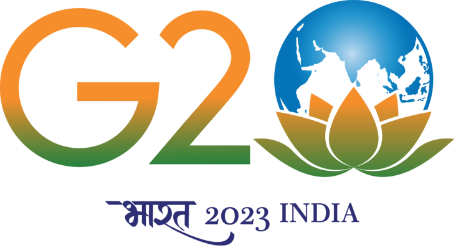1. WATERSHED DEVELOPMENT COMPONENT OF PRADHAN MANTRI KRISHI SINCHAI YOJANA (WDC-PMKSY 2.0)
The Department has been implementing a Centrally Sponsored Scheme (CSS) ‘Integrated Watershed Management Programme’ (IWMP) since 2009-10, which was amalgamated as the Watershed Development Component of PMKSY (WDC-PMKSY) in 2015-16. The continuation of WDC-PMKSY has been allowed by Government of India on 15.12.2021 as ‘WDC-PMKSY 2.0’ for the project period of 2021-2026 with a physical target of 49.50 lakh ha and indicative Central financial outlay of Rs. 8,134 crore. The unit cost of projects has been revised upward from Rs 12,000/ha to Rs 22,000/ha for plain areas, and Rs 15,000/ha to Rs 28,000/ha for the difficult areas and LWE areas. The States/UTs have been asked to use GIS and Remote Sensing techniques for better planning of projects. The States/UTs have also been suggested to map activities from other sectors which could be taken up within the project areas for better convergence in a saturation mode. The project period has been reduced from existing 4 - 7 years to 3 - 5 years. On the recommendations of NITI Aayog, rejuvenation of Springshed has been incorporated as a new activity in the WDC-PMKSY 2.0 within the approved cost. Till date DoLR has sanctioned projects to States/UTs covering entire physical target of land under the WDC-PMKSY 2.0 and the process of release of Central grant is under way.
2. OBJECTIVES
Objectives of watershed development projects are to improve productive potential of rainfed / degraded land through integrated watershed management; to strengthen community based local institutions for promotion of livelihoods & watershed sustainability, and to improve the efficiency of watershed projects through cross learning and incentive mechanism.
3. Next Generation Watershed Dev – Shift in Approach
Emphasis on effective use of rain water - relying more on water productivity Transition from predominantly mechanical/engineering treatments towards more of biological measures Diligent planning for crop systems diversification for risk management; enhancing productivity and opting for crop alignment as a principle. Diversification of the watershed economy by adopting Integrated Farming Systems (IFS) with horticulture, afforestation, fisheries, animal husbandry, apiculture, sericulture etc. Adaptation and mitigation of adverse impacts of climate variability & change Economically vibrant institutions, like FPOs, to promote agri-business services and impart efficiency to transactions Ecology, Economy and Equity Focus on decentralization, flexibility, community empowerment in the planning process to accommodate local, social and traditional strengths Rejuvenation of springs by taking up comprehensive treatment of springsheds as an activity under watershed development projects Knowledge partnership with National level reputed institutions for capacity building and innovations.
4. Cost Norms
The unit cost for watershed development projects under WDC-PMKSY2.0: Rs.22,000/ha for plain areas, Rs.28,000/ha for hilly & difficult areas (desert areas) upto Rs. 28,000/ha for LWE/IAP Districts Any cost over and above the cost norm to be borne by the State Governments and through convergence States/UTs may consider effective convergence with relevant central and State schemes to ensure comprehensive development Mapping of resources from other ongoing schemes, followed by approval of SLNA will form a way forward
5. End Results
Planned works and activities successfully completed, and visible reduction in soil erosion, increase in ground water table, and enhanced green cover over both arable and non-arable lands surfaces in the project area. The Gram Panchayat has willingly taken over operation and maintenance responsibility of assets created and transferred to them. Community organizations namely, FPO, WDF, SHGs, User Groups etc. are operating well The FPO has large number of shareholding members and a healthy capital base; and has well managed Custom Hiring Centre (CHC), Input Sale Outlet, basic agri-logistic infrastructure and market facilitation for local agri-commodities. Increases in the productivity levels of various crops and livestock Alternate livelihood options for all members of project community – farmers, landless agricultural labours, livestock keepers, artisans etc. The project community finds value in sustaining the treated land areas under projects and is well capacitated to manage it as a collective group. Increase in cropping intensity, greater diversification of agricultural production system, and the total agricultural output rises substantively. Various regulatory norms for use of water (viz water budgeting) and access to usufructs rights over assets are in place, and are adhered to by the local communities. Increase in average income of the households in the project area. The project communities adopt watershed project to ensure economic growth and ecological rejuvenation of the landscape






 भूमि संसाधन विभाग Department of
भूमि संसाधन विभाग Department of 

